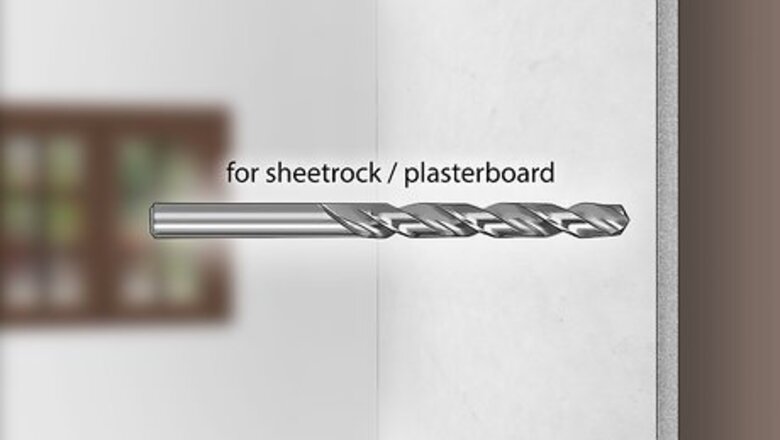
views
Choosing the Right Drill Bit
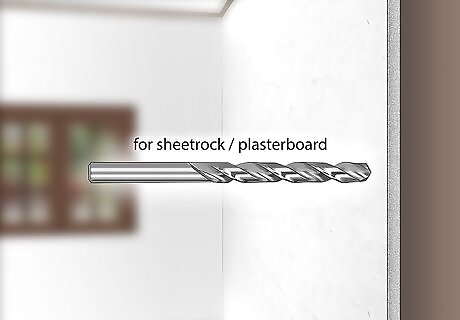
Use a drywall bit if the wall is sheetrock or plasterboard. Before you start drilling, take a look at your wall and determine what it’s made of. If your wall is smooth and sounds hollow when you knock on it, it’s likely a form of drywall, such as sheetrock or plasterboard. For drilling a simple hole into this type of wall, a drywall bit is your best bet. You can purchase drywall bits and other types of drill bits at most hardware or home improvement stores. If you’re planning to hang something (such as a picture) on a hollow section of drywall, you might choose to drive in a drywall anchor using a power screwdriver for greater security. If you’ll be drilling into a stud behind the drywall, opt for a wood drill bit.
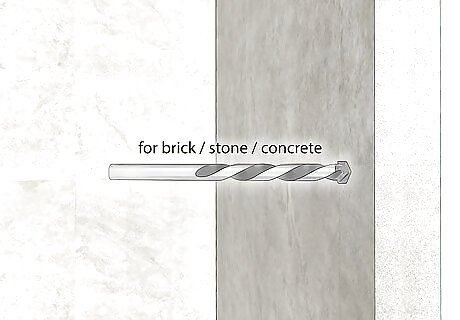
Get a masonry bit if your wall is brick, stone, or concrete. If your wall is made of a hard material, such as brick, block, concrete, or stone, choose a masonry bit. These bits are composed of soft steel with a tip made of tungsten carbide, which allows them to cut easily through hard walls.Tip: If the wall has a covering of paint or plaster, use a metal or drywall bit to start the hole. Switch to the masonry bit once you get through this initial layer. You will probably need to use a drill with hammer action to drive the bit into your wall.
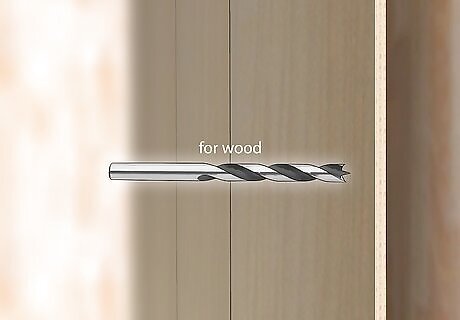
Choose a spur point bit for wood walls. If you’re drilling into a wall with wood paneling, opt for a spur point bit. These are also known as wood bits. They are designed with a sharp point at the tip to help keep the bit on track as it enters the wood. Spur point or wood bits are also useful for drilling into studs behind hollow walls.
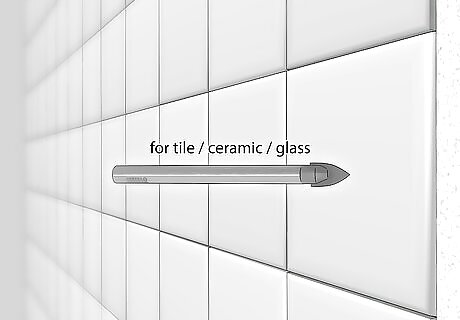
Opt for a tile bit for tile, ceramic, or glass. If you’re drilling into a brittle material such as tile, ceramic, or glass, you’ll need a specialized bit to pierce the material and prevent the wall from shattering. These drill bits have spear-like carbide tips and straight shanks that allow them to cut smoothly through these hard-to-drill materials. You may also be able to use a carbide-tipped masonry bit for some types of tile wall.
Finding and Marking Your Drilling Spot
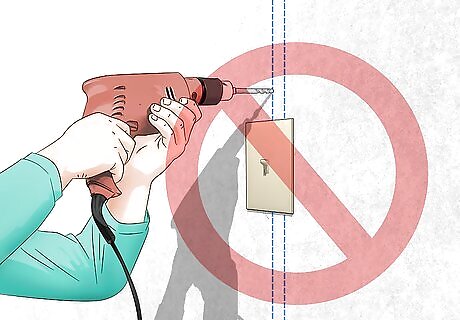
Avoid drilling above or below light switches and outlets. Accidentally drilling into your electrical wiring can be a dangerous and costly mistake. You can help prevent mishaps by making sure not to drill directly above or below light switches, outlets, and other obvious electrical fixtures in your walls. If you locate a switch or outlet on an upper floor, try not to drill directly beneath it on the floor below. You can also avoid accidents by using a wire detector. A deep scan stud finder can also detect electrical wires and metal. If you must drill near live wires, shut off the power to the area where you’ll be working beforehand. If you’re drilling into a bathroom wall or another wall located near plumbing or a radiator, you may wish to consult a plumber first. They can help you avoid accidentally drilling into a pipe.
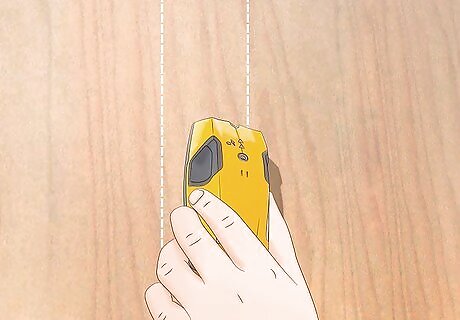
Look for studs if you’re drilling into drywall. If your wall is sheetrock or plasterboard, you’ll need to find a stud if you want your drill hole to support anything heavy (such as a mirror, a large painting, or a shelf). The easiest way to find a stud is to use an electronic stud finder. Turn on the stud finder and move it along the wall until it beeps or flashes a light to indicate that it has found a stud. Move it back and forth so that you can figure out where the outer edges of the stud are located.Did you know? In most houses, studs are spaced 16 inches (41 cm) apart. If you can locate one stud, you can approximate where the studs on either side of it are based on this standardized spacing. Studs are wooden beams that form the support structure for the walls. If you don’t have a stud finder, you may be able to locate a stud by knocking on the wall. The areas between studs will have a hollow sound, while the areas over the studs will sound more solid.
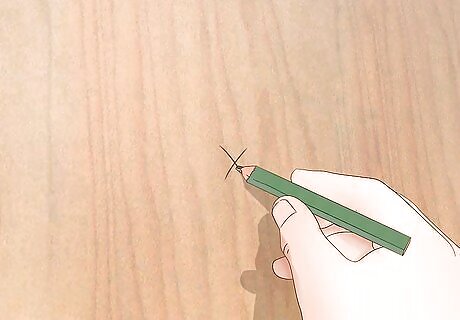
Mark the area where you would like to drill with a pencil. Once you’ve determined where you want to drill, you’ll need to mark the spot. Use a pencil or other marking tool to make a dot or an X over the exact spot where you want to drill your hole. If you need to drill 2 or more holes next to each other, use a level to make sure they are properly lined up. If you’re drilling into tile, ceramic, or glass, mark the spot with an X made of masking tape. This will both mark the spot and keep the drill bit from slipping or chipping the tile when you begin to make your hole.
Creating the Hole and Adding a Screw or Anchor
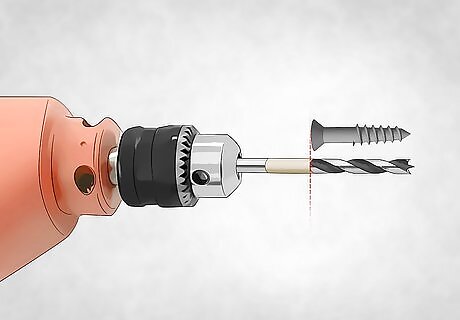
Use masking tape to mark the correct depth on your bit. If you need your hole to be a particular depth (e.g., if you’re installing a screw or anchor of a certain length), measure off the appropriate length on your bit. Mark the depth by wrapping a thin strip of masking tape around the drill bit.Tip: If you’re not sure what size drill bit is appropriate or how deep your hole should be, consult the packaging that came with your screws or anchors to see if that information is included. Some drills come with depth gauges to help you mark the appropriate depth. If you’re putting in a screw or anchor, you’ll also need to choose a bit of the appropriate diameter.

Put on safety goggles and a dust mask before you start drilling. Drilling can produce a lot of dust and debris. To protect your eyes, nose, and lungs, it’s important to wear proper safety equipment. Purchase safety goggles and a simple dust mask from a hardware or home supply store before you start your project. It’s also a good idea to check your that your drill bit is securely in place before you start.
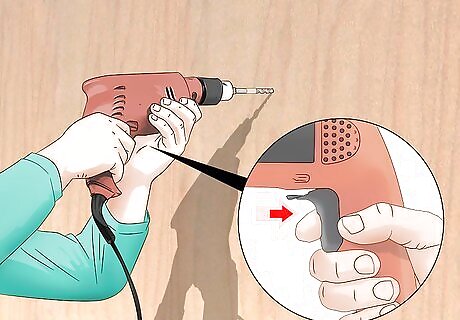
Place your bit on the point where you’d like to drill and squeeze the trigger. When you’re ready to start, position the tip of the drill on the point where you’d like to create your hole. Make sure the bit is level and positioned at a 90° angle relative to the wall. Squeeze the trigger gently to begin turning the bit. If you’re drilling into drywall, you may find it helpful to make a small indentation with a hammer and countersink before you drill to help guide the bit. If you’re drilling tile, you will need a lot of patience and firm pressure to get the hole started. You’ll feel and hear the difference once the bit breaks through the glaze and starts drilling into the tile underneath.
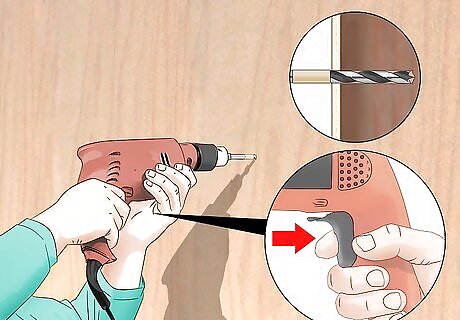
Increase the speed of the drill while applying pressure. Once the drill begins to penetrate the wall, squeeze the trigger a little harder and apply firm, steady pressure on the drill to drive it in. Keep drilling until you achieve the desired depth. Once you reach the depth you want, don’t stop the drill—just slow it down.
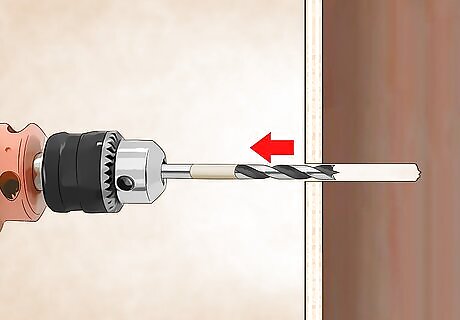
Withdraw the bit with the drill still on when you reach the desired depth. With the drill still running, ease it back out of the hole you just created in one smooth motion. If you stop the drill before you try to pull it out, you may break the bit. Make sure to keep the drill level as you pull it out of the hole.
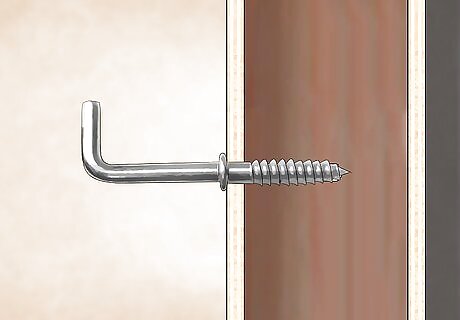
Tap in your anchor if you’re using one. If you’re installing a plug or anchor in your drill hole, carefully tap it into the hole with a rubber mallet. Make sure the anchor is securely in place before you install a hook or screw in the hole. You will likely need an anchor if you’re planning to mount something in drywall, masonry, or tile. You can insert a screw or hook directly into a hole drilled in wood using a screwdriver.




















Comments
0 comment